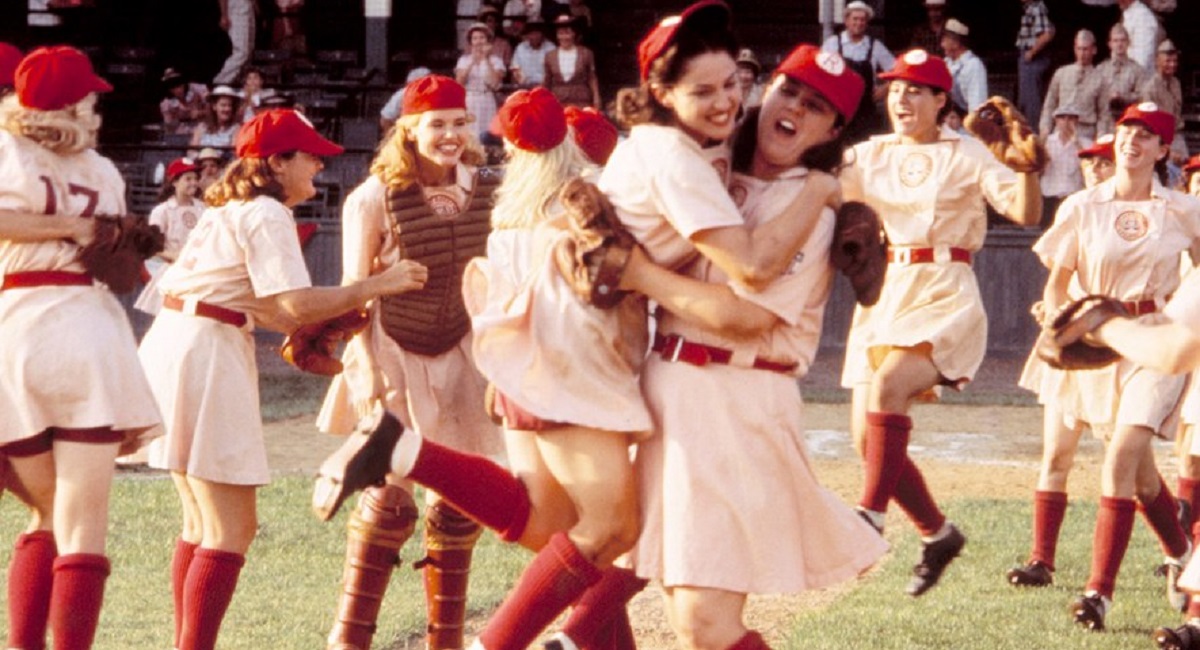Is ‘A League of Their Own’ Based on a True Story?
Maybe there should be crying in baseball.

Many of us grew up with A League of Their Own. The 1992 movie starred Geena Davis, Lori Petty, and Tom Hanks in a comedy-drama about a professional women’s baseball league. As a kid, I loved the movie because it featured mainly female actors and showed women breaking out of the traditional gender roles of 1940s America. I felt like there was at least one woman on the main team (the Rockford Peaches) that everyone could relate to. Madonna as “All the way” Mae Mordabito and Rosie O’Donnell as Doris Murphy were friendship goals.
The movie encapsulated the World War II era so well that in 2012, the U.S. National Film Registry inducted it into the Library of Congress for being “culturally, historically, or aesthetically significant.” It is such a key part of our pop culture that Amazon made a series with the name same. The series will explore new characters on different teams, yet carry on the feel of A League of Their Own. But is the story of professional women ball players a work of fiction or does it have historical roots?
Women Belong at Home, First, Second, and Third
A League of Their Own is actually based on real historical events. In 1943, Philip K. Wrigley (yes, like the gum and baseball stadium) founded the All-American Girls Professional Baseball League (AAGPBL). When America entered World War II, many feared that the national pastime of baseball would end—since most able-bodied men joined the war effort. To keep baseball going, Wrigley decided to put women on the field instead.
The initial tryouts drew over 200 women, yet only 60 were chosen for the official league team roster. Over the league’s eleven-year lifespan, there were 15 teams—including the Rockford Peaches. Eleven of the players eventually were inducted into the National Women’s Baseball Hall of Fame. Unfortunately, the league kept to the segregation of Major League Baseball and excluded any Black women from joining.
The AAGPBL paid players a weekly salary ranging from $45 to $125. The rate was substantial, given that a female skilled laborer, during the same time period, earned an average weekly salary of $30. But although they got to travel and play the game they loved professionally, the women had to put up with a lot more rules than their male counterparts did. The uniforms looked just like they did in the movie. The mandatory skirts provided zero protection against injuries (I guess legs covered in horrendous bruises were better than pants).
Even off the field, the women were confined to a set of rules that, if broken, would lead to their removal from the AAGPBL. Women attended charm school during spring training so they knew how to act in public. They could not be seen using drugs or alcohol, which their mandated chaperones would help enforce. Pants could never cover their legs. And they must always be as attractive as possible. This meant always wearing lipstick, possibly with makeup provided to them in beauty kits. Above all, they could never have short hair. One player was famously fired just because she cut her hair. I wonder why they never pushed these standards on the male players of Major League Baseball.
The biggest change was the people in the movie. They are all fictional versions loosely based on real people. This doesn’t make their stories any less relevant or untrue. The movie just didn’t have to get authorization from the real people to show the story on the big screen. I am hopeful that the new Amazon series will give us more fun historical fiction about women (from various backgrounds) playing America’s favorite game.
(featured image: Sony Pictures)
Have a tip we should know? tips@themarysue.com